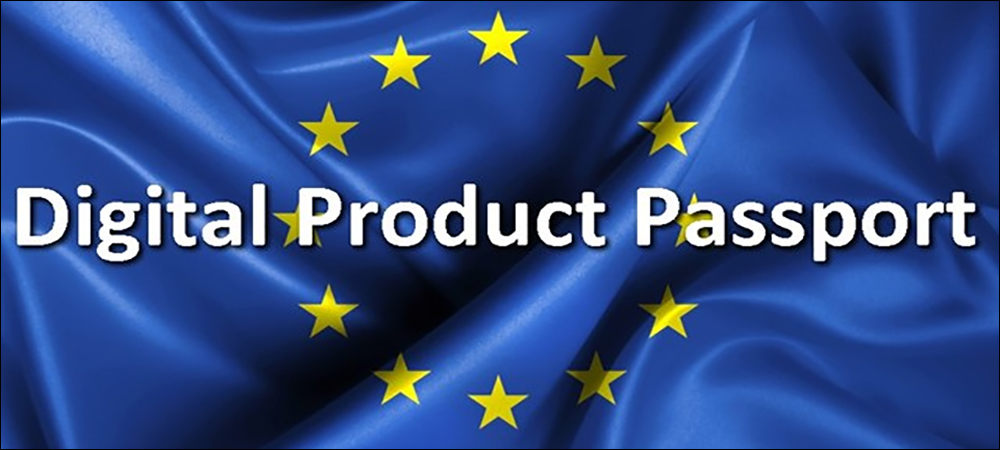- Gaining a Complete Circular Economy by 2029
- Leveraging RFID, QR Codes, NFC and More
- Open Data Exchange
As working groups prepare for a European-wide digital passport program related to every product bought and sold on that continent, Avery Dennison has taken part in the planning and is looking to provide both a data solution platform and labels that could uniquely identify everything from apparel and tools to appliances and food. Many goods in the European Union (E.U.) are expected to be uniquely identified and tracked via a digital twin as they move through the supply chain, then are sold and ultimately recycled or disposed of.
Products subject to the European Commission (E.C.)’s Ecodesign for Sustainable Products Regulation (ESPR) include smartphones, tablets and solar panels, which have the fastest-growing waste stream. At the center of the program, slated to be taken fully live in eight years, will be each product’s Digital Product Passport (DPP). The DPP regulation is expected to be applied beginning in early 2024 and will then be rolled out gradually until 2030.

The CIRPASS consortium (a loose acronym for “Collaborative Initiative for a Standards-based Digital Product Passport for Stakeholder-Specific Sharing of Product Data for a Circular Economy”) is leading the E.C.’s project to build a network of organizations that are creating standards and methods for a unified DPP system. While the long-term goal is to create a passport or identity linked to specific data about every product sold in the European Union, the initial focus is on three product types: electronics, automotive batteries, and textiles or apparel. The first CIRPASS meeting took place in Brussels on Oct 5.
Gaining a Complete Circular Economy by 2029
The E.C. made a call earlier this year for grant proposals, and the CIRPASS consortium’s proposal was accepted. Avery Dennison was invited to join CIRPASS along with approximately 30 organizations, including GS1 in Europe, Fraunhofer and multiple large standard-setting institutions, as well as other industry players that are handling different aspects of enabling the solutions. “We saw tremendous opportunity for Avery Dennison to participate in a group that’s actually helping to provide input into a standards-based digital product passport,” says Max Winograd, Avery Dennison’s VP of connected products.

Max Winograd
Other participants in the program include industrial, digital, international, standards, regulatory and non-profit organizations across Europe. The next 18 months will be used to create a product data model, Winograd explains. To achieve the goal of a circular economy by the end of 2029, je says, the DPP program must include common rules, principles, standards and classifications.
Circular economies have been a focus for industry and governments worldwide, as part of an effort to reduce waste. They serve as an alternative to a linear economy, in which a product ends up in the waste stream, its materials lost to disposal. A 2019 Gartner survey predicted that circular economies will replace the linear model within the next decade. However, reaching that goal will require an ecosystem of participants collecting and sharing data to enable the tracking of products throughout their lifespan and beyond.
The E.U.’s DPP initiative follows the ESPR, which creates a framework that sets eco-design requirements for more sustainable products. The vision behind ESPR, according to Winograd, is to improve the circularity of products from manufacture to sale, use and return to the supply stream via recycling. The DPP provides information about those products’ environmental sustainability and is expected to help consumers and businesses make informed choices when buying, repairing or recycling products.
Leveraging RFID, QR Codes, NFC and More
With the DPP program, Winograd says, every product will be tagged, identified and linked to data relevant to its circularity and sustainability. The capture and sharing of that information can be accomplished via multiple technologies. UHF RFID can provide inventory data about goods moving through the supply chain and stores. In some cases, however, QR codes, Near Field Communication (NFC) or other technologies could help individuals access data unique to particular products.
For instance, an RFID tag could have a QR code printed on the front of it. Once the tag was applied to a product, fixed or handheld RFID readers would capture data about that item as it moved through a warehouse, distribution center or store. After the product was sold, consumers could then scan the QR code printed on the same label to view the relevant data on their smartphones. Such information could include what materials were in that product, as well as how to safely dispose of or recycle it.
While all products will eventually be part of the program, the choice of textiles, batteries and construction equipment was made because the goods in these sectors are already being identified in some manner for another program. By selecting the three types of products, the DPP group is “touching some very big categories of products,” Winograd says, with plans to move into food and electronics as well. The first 18 months of the deployment will center on deciding what critical data is needed for the digital product passport, he explains, in addition to “defining a product data model that has some demonstrated usefulness, particularly for the circular economy.”
In this effort, the group will propose an open data-exchange protocol, then build stakeholder consensus on the key data elements. “While this is a very exciting opportunity,” Winograd states, “it also presents a lot of areas where you really need to have industry partners come together to help define how the data is generated, how it’s tracked and how it gets to the result that we all want—which is products that are more circular and sustainable by design.”
Open Data Exchange
Winograd says Avery Dennison is in a position to provide support for the DPP program on two levels. “The goals of DPP fall right in the wheelhouse for Avery Dennison,” he explains, for both labeling and managing product data. The company has an existing portfolio of intelligent labels used to identify products and their attributes, and its atma.io connected product cloud software can enable the tag identification to be linked to data of use to constituents selling, shipping or buying products.
There are numerous decisions to be made, Winograd says, as the DPP rollout proceeds. Although the European Parliament has approved the plans, every country in Europe has somewhat different regulations and requirements. Additionally, he says, products are not alike when it comes to how they are used and how they should be tracked. “There’s a lot of different key considerations to bear in mind,” Winograd adds, since different industries have varying supply chains, some of which are more complex than others.
To implement a single identifying and digital passport, businesses that produce products will need to invest in the proper intelligent labels and a cloud-based solution for storing the shared data. Avery Dennison is currently working with customers that are in the process of adopting the early stages of a DPP identifier for their products in anticipation of the new regulation. These companies have indicated that they prefer to be viewed as being proactive and engaging in shaping the identification standards.
While it is too early for Avery Dennison to ensure a company achieves DPP compliance via its intelligent labels and atma.io software, Winograd says those already seeking to comply can begin putting data about their products in a single cloud, and they can gain benefits as details of the DPP requirements are confirmed. “That makes it a lot easier to take that data and configure it to meet the DPP [requirements] based on all the data that you have,” he states. “We can kind of enable the building blocks that we know will be part of DPP,” including a cloud platform that is interoperable.
In the long term, Winograd says, food, furniture and home goods are among the categories of products that could go live with the program as early as 2024. Looking ahead, he predicts more circular economy efforts by regulatory bodies and governments around the world, “because there’s such an imperative around being able to track the product from source through the consumer.”
Key Takeaways:
- The European Commission has prompted a set of working groups that include members such as Avery Dennison, to develop a digital passport for every product bought and sold in Europe.
- The Digital Product Passport will provide information about a product that can be stored in an open-standard, cloud-based platform to enable a circular economy in which each product is properly disposed of or recycled.

